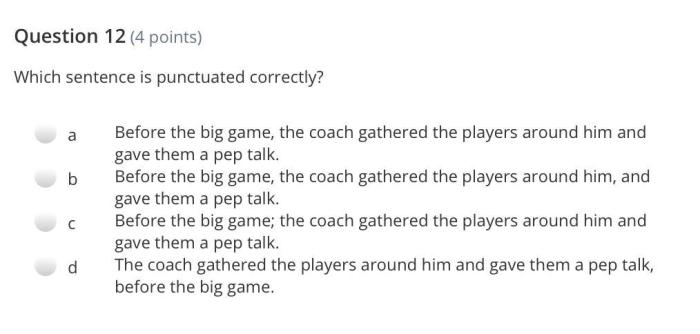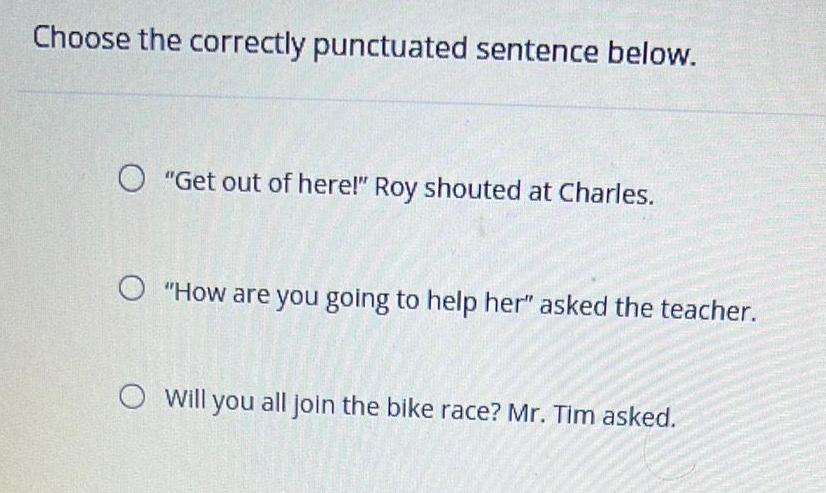Which sentence below is correctly punctuated – Delving into the intricacies of punctuation, this comprehensive guide explores the significance of punctuation in sentence structure, its impact on meaning, and the various types of punctuation marks. By examining common errors and providing strategies for improvement, this analysis empowers writers to enhance clarity, tone, and emphasis in their writing.
Grammatical Structure

Punctuation plays a crucial role in sentence structure, providing clarity and enhancing comprehension. It enables writers to delineate sentence elements, indicate pauses, and convey emphasis. Correct punctuation ensures that sentences are grammatically sound and convey the intended meaning.
Consider the following examples:
- Correct:The cat, sleeping peacefully, purred contentedly.
- Incorrect:The cat sleeping peacefully purred contentedly.
In the correct example, the comma separates the introductory phrase from the main clause, clarifying the relationship between the two elements. In the incorrect example, the absence of the comma creates ambiguity, making it unclear whether the cat is sleeping or purring.
Types of Punctuation: Which Sentence Below Is Correctly Punctuated

Various punctuation marks serve specific purposes in written communication:
- Period (.): Ends sentences, indicating a complete thought.
- Comma (,): Separates elements in a series, introductory phrases, and dependent clauses.
- Semicolon (;): Joins related independent clauses or separates items in a series containing internal punctuation.
- Colon (:): Introduces a list, explanation, or quotation.
- Question mark (?): Ends interrogative sentences.
- Exclamation point (!): Expresses strong emotions or emphasizes a statement.
- Hyphen (-): Connects words or parts of words to form compound terms or to divide words at the end of a line.
- Dash (—): Indicates a break in thought or a pause for emphasis.
- Quotation marks (” “): Enclose direct speech or quoted material.
- Ellipsis (…): Indicates an omission or pause in thought.
- Parentheses (()): Enclose supplemental information or nonessential elements.
- Brackets ([]): Enclose information that is more or supplementary than the surrounding text.
Commonly Asked Questions
What is the most common punctuation error?
The most common punctuation error is the misuse of commas, often resulting in run-on sentences or comma splices.
Why is punctuation important?
Punctuation provides clarity and structure to sentences, aiding in comprehension and preventing ambiguity.
How can I improve my punctuation skills?
Regular practice, studying grammar rules, and using online resources can significantly enhance punctuation skills.
